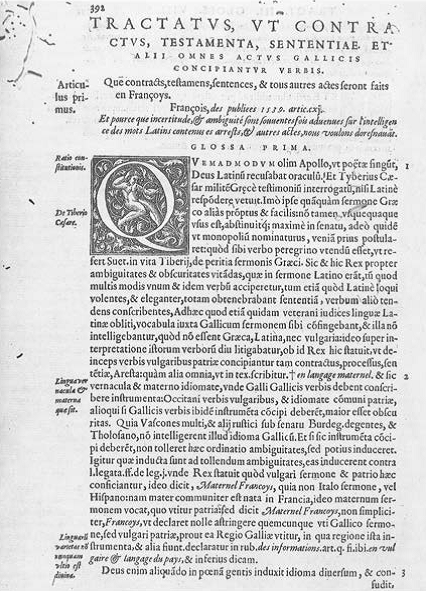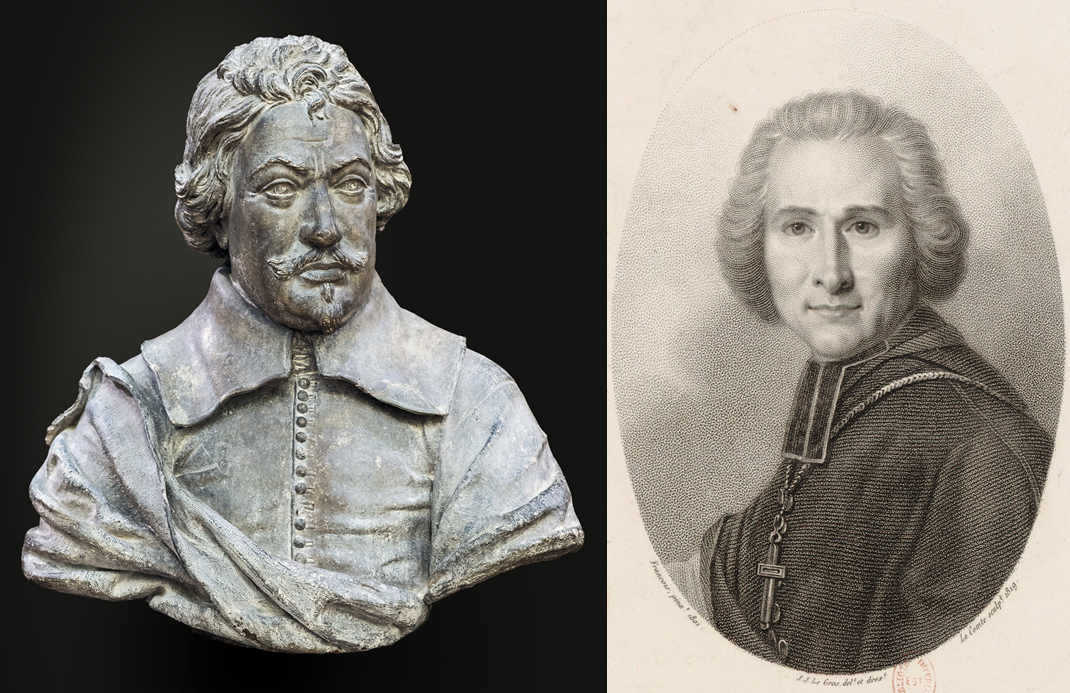
The Occitan language then and now
The Occitan language then and now

MMedieval Occitan was the language of the troubadour poetry, written during the 12th and 13th centuries, that garnered immense prestige throughout Western Europe. In Catalonia, the troubadours’ Occitan became the language of poetry and left its mark on lyrical compositions until well into the 15th century. Throughout the Middle Ages, Occitan was also used for a wide range of prose texts, from fiction to administrative documents: for example, Ramon Llull had some of his works translated into Occitan in order to reach a wider audience. However, the gradual arrival of the power of the kings of France to various locations in the Occitan domains led to the language no longer being used for administration or in any writing. By the time the Ordinance of Villers-Cotterêts, signed by Francis I in 1539, had imposed the use of French in all official documents throughout the kingdom, the use of Occitan for administrative purposes had already been almost completely abandoned. It was really only in the kingdom of Navarre, joined to the French crown through Henry IV in 1589, where official use of Gascon was maintained until the beginnings of the 17th century (Bec 1995: 77–80).
Naturally the inroads that French made in terms of spoken language were limited to the upper classes, so Occitan was in general use in a society in which the dominant groups were bilingual in Occitan and French. The 16th and 17th centuries see significant literary output in Occitan, by authors such as Pèir de Garròs (c. 1525–83), Loís Belaud de la Belaudiera (1543–88), and Pèire Godolin (1580–1649). With the advent of the French Revolution, a bourgeois ideology of ‘national’ unity became widespread, and with it, the desire to see the spread of French took on an aggressive and intolerant attitude towards the other languages spoken in the State. We need only remember the title of Henri Grégoire’s report presented to the National Convention in 1794: Rapport sur la nécessité et les moyens d’anéantir les patois et d’universaliser l’usage de la langue française (‘Report on the necessity and means to annihilate the patois [a pejorative term for local language varieties] and to universalise the use of the French language’). Thus, throughout the 19th century, although the earlier stability in the social distribution of the languages was, broadly speaking, maintained, language substitution was now clearly stimulated both by State nationalism and its new links to social mobility (Sauzet 1987, 1988; Lieutard 2004). On a symbolic level, the process of language change finds its ideological basis in nationalism and in the belief that French is the language of progress, both in the sense of collective advancement and individual social promotion; on a practical level, within the context of the wider process of social modernisation that was taking place in Europe in the 1800s, the monolingual and monolinguist State organization and management create the conditions that lead the population to pass on the official language to the next generations.

It is nevertheless almost a hundred years after the Revolution that the compulsory schooling established in 1881, later supported by the mass media, makes knowledge of French available to the population as a whole. Broadly speaking, the upper classes and the urban middle classes had already made French their own by the dawn of the 20th century; the transmission of Occitan within families had come to a definitive halt among the urban working classes and in medium-sized towns in the first quarter of the same century, and in rural areas in the second quarter. Twenty years later in these rural communities, there was a sudden change in the soundscape as the first massively monolingual generation reached adulthood. The fact is that nowadays a foreigner travelling through the original Occitan language region is only likely to hear it on very rare occasions. The most significant factor to bear in mind is the practically total suspension of the transmission of the language within families, which has led to a greatly accelerated deterioration in knowledge of the language and, needless to say, its use.
The situation in the Vall d’Aran and the Occitan-speaking valleys in Italy reflects the particular history of each of these territories, decisively influenced by the nation states to which they belong. Intergenerational transmission of Occitan has continued without interruption in the Vall d'Aran. The problems the language faces there are due to heavy immigration exacerbating the existing situation of linguistic subordination. The presence of Aranese in schools and the local administration has managed to put a brake on the process of linguistic substitution (Lamuela 2008). However, according to a poll carried out by the Direcció General de Política Lingüística (General Directorate of Linguistic Policy) and Idescat (Institute of Statistics of Catalonia) in 2013, only 56.61% of respondents over 15 said they were able to speak Occitan, compared to 80.74% who were able to understand it (Direcció General de Política Lingüística & Institut d’Estadística de Catalunya 2015: 179). Italy has also seen a process of linguistic substitution that differs from the French model in two respects: firstly, it has taken place one or two generations later, depending on the location; and secondly, it was underpinned by an ideology and discourse which privileged the compensatory idealisation of local language varieties and eschewed substitution as the ultimate objective. The fact is that the transmission of Occitan within the family has ceased there, and the language is, compared to the situation in France, in a less advanced, but no less inexorable, phase of decline.
Occitan is both one of the great European languages of culture and, as a consequence of policies of ethnocide, one the languages in the most precarious social situation. Nonetheless, despite this difficult position, it is the vehicle for a significant cultural movement. In the 19th century, in the same period when the great process of linguistic substitution was taking shape, there was a renaissance in literature in Provence centred on the literary association called ‘Lo Felibritge’, founded in 1854. One outstanding figure within the movement was Frederic Mistral (1830–1914), the author of works such as Mirèlha and Calendau as well as a dictionary, Lou Tresor dóu Felibrige (1885), still an essential reference work today. The movement also had a notable presence in Gascony, especially in the work of Miquèu de Camelat (1871–1962), author of Belina and founder of the Escòla Gaston Febus (Gaston Febus School), and of Simin Palai (1874–1965), poet and author of a monumental Dictionnaire du béarnais et du gascon modernes (1932–1934). The creation of the Societat d’Estudis Occitans (Society of Occitan Studies) in 1930, which was then expanded into the Institut d’Estudis Occitans (Institute of Occitan Studies) (IEO) in 1945, heralded a wave of renovation that has provided modern Occitan with the system of social and cultural references that prepared the ground for a renewed awareness of linguistic unity and the possibility of the language being used in all areas of contemporary society. The various linguistic promotion initiatives have given rise to professionalised activities and are starting to make their mark on the structures of the public administration. A key element in this movement was the codification of Languedocien, subsequently applied to all the other varieties, which was carried out by Loís Alibèrt (1884–1959), author of the Gramatica occitana segon los parlars lengadocians (1935) and his Dictionnaire occitan - français, published posthumously in 1966. I shall not detail here the wide variety of cultural activities that take place in Occitan (see Boyer & Gardy 2001 and Carrera 2011); instead, I will merely record some of the writers of exceptional quality, such as Joan Bodon (1920–75), Marcèla Delpastre (1925–98), Bernat Manciet (1923–2005), and Max Roqueta (1908–2005). To this list we could add Pèire Bec (1921–2014) and Robèrt Lafont (1923–2009), who as well as being literary authors were leading figures among a flourishing of intellectuals, researchers, and cultural activists who kept alive the possibility of the recuperation of the social use of Occitan.
Xavier Lamuela1
Bibliography
- Bec, Pèire (1995), La langue occitane, 6th ed. Paris: Presses Universitaires de France. [The 1st ed. is from 1963; there is a Catalan translation: La llengua occitana, Barcelona: Edicions 62, 1977]
- Boyer, Henri & Gardy, Philippe (eds.) (2001), Dix siècles d’usages et d’images de l’occitan. Des troubadours à l’Internet. París: l’Harmattan.
- Carrera, Aitor (2011), L’occità. Gramàtica i diccionari bàsics (occità referencial i aranès). Lleida: Pagès.
- INSEE, Institut National de la Statistique et des Études Économiques, http://www.insee.fr [consultat el 06/05/2011]
- Istat, Istituto Nazionale di Statistica, http://demo.istat.it [consulted in 06/06/2011]
- Lamuela, Xavier (2008), “La Val d’Aran: Situazione sociale della lingua occitana e interventi di politica linguistica”, Paola Gualtieri & Marco Viola (eds.), Tutela e promozione delle minoranze linguistiche in Trentino. Trento: Provincia Autonoma di Trento: 49-66.
- Lieutard, Hervé (2004), "La conversion des occitanophones à l’usage du français", Lenga e País d’Òc 43: 1-12.
- Sauzet, Patric (1987), "Delai de la diglòssia. Per un modèl mimetic del contacte de lengas", Lengas 21: 103-20.
- Sauzet, Patric (1988), "L’occitan. Langue immolée", Geneviève Vermes (eds.) Vingt-cinq communautés linguistiques de la France. I: Langues régionales et langues non territorialisées. París: L’Harmattan: 208-60.
